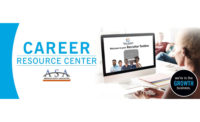When the owners of Mountainland Supply in Orem, Utah, were ready to get liquidity for their ownership, they could have sold to an outsider.
But Brandon Johnson, Mountainland’s CFO, says, “We were afraid of what it would do to the culture of our company. We figured about 1/3 of our employees would be dismissed.”
Instead, the owners turned to an employee stock ownership plan or ESOP. The ESOP paid the owners a fair price and preserved the legacy of the company.
For the many baby boomers now retiring, this combination of preserving the legacy of the business and getting a fair price seems almost too good to be true. But as at Mountainland, as well as other companies in the distribution industry, an ESOP can make it very practical.
ESOPs are a company-funded employee trust that uses pre-tax future corporate profits to buy out the owners. Employees do not buy the stock, the company does. Congress has provided companies sponsoring ESOPs and sellers to ESOPs with substantial tax advantages.
How it works
An ESOP is a kind of retirement plan, similar in some ways to a 401(k) plan. The company sets up an employee stock ownership trust. The trust can borrow money to buy shares, with the company repaying the loan by making annual tax-deductible contributions to the trust to repay the loan. The company can borrow money from a bank and/or the seller can take a note, repaid with a reasonable rate of interest. The trust puts the shares in a suspense account and releases them to employee accounts as the loan is repaid.
Alternatively, the company can make discretionary annual cash contributions to gradually buy shares over time. This is, in effect, a stock redemption, but normal redemptions are not tax-deductible. Contributions to ESOPs to buy shares are. So if a company is sold for $5 million, it does not need about $7 million in profits to redeem the shares, it just needs $5 million.
For an owner of a C corporation where the ESOP ends up with at least 30% of the stock, proceeds on the gain from the sale to the ESOP can be tax-deferred by reinvesting in the securities of other domestic companies. Tax is due when these securities are sold. If the company is an S corporation, LLC or partnership, it can convert to a C-corp. before the sale to take advantage of this tax deferral. If the company stays S, the owner does pay capital gains tax on the sale, but reaps all the other benefits of selling to an ESOP. S-corp. ESOPs, however, pay no tax on the profits attributable to the ESOP, so a 100% ESOP pays no income tax. Many companies are C corps at the time of sale, then convert to S status right afterwards to cut their tax bill.
The sale can be all at once or gradual, for as little or as much of the stock as desired. For the employees, no contributions are required to purchase the owner’s shares. The owner can stay with the business in whatever capacity is desired. The plan is governed by a trustee who votes the shares, but the board appoints the trustee so changes in corporate control usually are nominal unless the plan is set up by the company to give employees more input at this level.
Stock is held in the trust for employees until they leave. At least all employees with 1,000 hours or more in a plan year must be included. Their accounts vest over up to six years. Contributions allocated to employees are based on relative pay or a more level formula, then distributed after the employee terminates. ESOPs cannot be used to share ownership just with select employees, nor can allocations be made on a discretionary basis.
The payoff
The price the ESOP will pay for the shares, as well as any other purchases by the plan must be determined annually by an outside, independent appraiser based on what a hypothetical willing buyer would pay. This occasionally is less than what a company might be able to get from selling to a third party, although those sales do not generate tax benefits.
ESOPs have a stellar track record. Research shows they grow about 2.5% per year after than they would have without an ESOP and employees end up with about 2.2 times the retirement assets. At Dakota Supply Group, a long-time ESOP and the 2017 Supply House Times Supply House of the Year, many employees are now millionaires.
All this may sound appealing, but it is not feasible for every company. Several factors must, at a minimum, be present:
• The company is making enough money to buy out an owner and keep up with its other business costs.
• If the company is borrowing to buy the shares, its existing debt must not prevent it from taking out an adequate loan.
• If the seller wants to take the tax-deferred rollover, the company must be a regular C-corp. or convert from S to C status.
• Management continuity must be provided.
• The company must be willing to put up with the added costs and complexity of an ESOP. ESOPs cost about $100,000 to $150,000 to set up (sometimes more), although any sale involves substantial fees and, often, a brokerage percentage that ESOPs do not. ESOP sales also do not require contingencies, such as earnouts, that are common in other sales.
If all this seems to fit, find someone who has experience in the ESOPs world (and not just someone who claims it) to see if this makes sense for you.
Author bio: Corey Rosen is the founder of the National Center for Employee Ownership, a nonprofit organization (www.nceo.org). The NCEO maintains a service provider directory of ESOP experts. Corey welcomes your questions at crosen@nceo.org.




